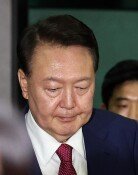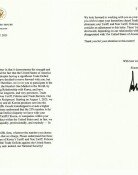Seoul air pollution exceeds gov`t limits: survey
Seoul air pollution exceeds gov`t limits: survey
Posted March. 26, 2001 15:17,
The air in the congested main streets of Seoul is polluted beyond limits set by the municipal government.
The findings came out of a joint survey conducted by a Dong-a Ilbo task force and Kim Seon-Tae, professor of environmental engineering at Daejeon University. The quantity of nitrogen dioxides in exhaust gas in 13 of the 15 busiest points in the capital city, including Sejongro, Seoul Station, City Hall and Shinchon intersection, exceeded the permissible level of 70 parts per billion (ppb) over a 24 hour period.
The survey team used the passive sampler method, widely adopted in Britain and other industrialized nations. For the purpose of comparison with figures provided by the city administration, it chose 15 points where measurement was taken for 24 hours on Mar. 13-14. The Seoul City government maintains car exhaust measuring sites at seven of the locations, and the other eight have electronic display panels on which pollution levels are shown.
The average sulfurous nitrogen content was 80.6 ppb, 10.6 ppb higher than the limit. At 103.5 ppb, the street in front of Banpo shopping center in southern Seoul showed the highest contamination, followed by Shinsa intersection, the street running in front of Moraenae market and Yongdungpo intersection. All had measurements of at least 100 ppb, 30 ppb higher than the permissible level.
In contrast, Chongryangri junction (56.8 ppb) and Shiheungdaero highway near Kuro-dong (66.6 ppb) were below the limit. On the same day, however, readings on electronic display panels operated by the municipality averaged 55.9 ppb, 20.7 ppb lower than the numbers obtained by the Donga team at the same locations.
The gap between the figures given by Seoul City and those compiled by the Donga team apparently resulted from the fact that the former had its measuring stations at some distance away, in parks or residential areas. The Dong-a team`s survey was conducted on the street just under the display boards.
Prof. Kim said that a difference of over 20 ppb in nitrogen dioxide was likely caused by gap between the measuring devices. ``The display panels mislead citizens into believing that they are living in clean air even though they are actually exposed to unhealthy air pollution,`` he said.
Officials of Seoul City and the environment ministry admitted the need to move some monitoring posts elsewhere to increase accuracy, but said they could not find suitable alternative locations and that there was some disagreement among advocacy groups and experts on verifying the figures.
Ha Jong-Dae orionha@donga.com







